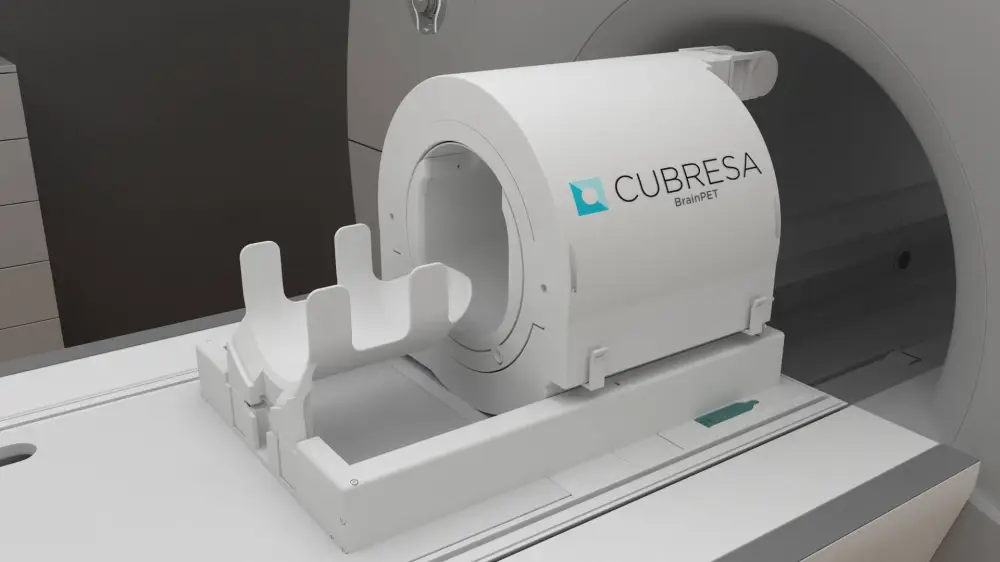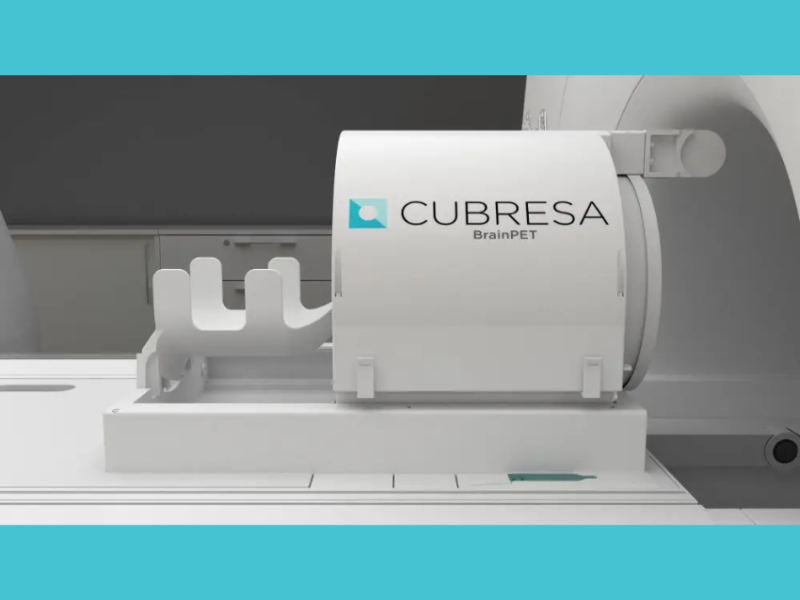For 12 years, Cubresa Inc. has been methodically developing its unique medical imaging technology, starting with the more accessible pre-clinical market and devices researchers would use on small animals.
Tapping every government funding opportunity, every friend and family member and eventually broadening out to the angel investor community, the company has stuck to its game plan to design devices that will play a role in advancing human health.
Led by founder and CEO James Schellenberg, an expert in imaging technology who worked at the Winnipeg MRI company, IMRIS, Cubresa made positron emission tomography (PET) machines that fit inside magnetic resonance imaging (MRI) machines designed for small animals in pre-clinical labs.
They are still being made, but last week the Winnipeg company installed the world’s first BrainPET system inserted inside an MRI machine for clinical research at the Lawson Health Research Institute in London, Ont.
It’s an important next step for a company that has refused to quit despite the expense and rigorous demands of the medical device industry.
“This is an incredible milestone for our company and an exciting time for brain imaging,” Schellenberg said. “We look forward to working with our partners at Lawson over the coming years who are focused on cutting-edge brain research activities.”
There are many whole body PET/MRI system around the world, but none that are sized and designed specifically for PET/MRI brain imaging.
Researchers at Lawson had already been working with Cubresa’s small animal device. The research institute, which is associated with St. Joseph’s Health Care and London Health Sciences Centre, installed the first whole body PET/MRI in Canada in 2012 — the fifth in the world — and now has the first BrainPET/MRI.
The device has not yet received FDA (Food and Drug Administration) clearance and can only be used for research, but Cubresa already has two others sold to the Martinos Center for Biomedical Imaging at Massachusetts General Hospital in Boston and the Barrow Neurological Institute in Phoenix, Ariz., the world’s largest neurological disease treatment and research institution.
The company has launched the device targeted at research institutions — which are not treating patients per se — and will initiate the FDA approval application in the coming months.
Lisa Bako, Cubresa’s vice-president of sales and strategic partnerships, said the other two installations will commence in the coming weeks.
“We have sold into some exciting research centres and we are having lots of other conversations with others around the world who have interest in this device,” she said.
Cubresa officials believe the timing is right to move into the clinical market as the discussions about therapies for things such as Alzheimer’s disease are starting to be much more encouraging.
“There is access to therapies for Alzheimer’s disease for the first time in 20 years,” she said. “PET/MRI imaging is going to play an increasingly important role for patients with Alzheimer’s, dementia, Parkinson’s and other brain diseases. So it is an exciting time for us to be entering into the space.”

Jonathan Thiessen, imaging scientist and director of the PET/MRI program at Lawson Health Research Institute — and a PhD graduate of the University of Manitoba — said they had been talking to Cubresa for some time about developing this type of device.
“One of the technical challenges when you start imaging the brain is that a clinical, whole body PET/MRI has a limited amount of resolution for what you can see,” Thiessen said. “As in anything in life, in research and all sorts of endeavours, it takes a long time. We have finally got there.”
One of the benefits of using a device like Cubresa’s is that they can do both the PET and MRI scans at the same time with the same equipment, he said.
“We can do the scan in hour, get all the information we need so the clinical team can make the decisions they need to make in terms of the rest of their clinical management,” he said.
Whole body PET/MRI machines can cost in the millions. Bako said Cubresa’s BrainPET/MRIs are about one-seventh the cost.
The 20-employee company has been happy about the support it has received in Manitoba, she said.
“We’re proud to be here and grow here and to keep highly qualified personnel in the province,” she said. “We think we are building something exciting for the staff we have today and for university grads who are looking to work with an exciting high-tech medical device company in the years to come.”
News source: Winnipeg Free Press
